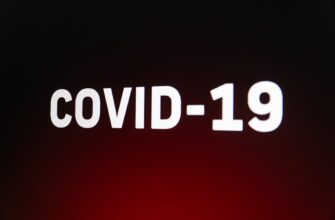Bitcoin Mining Halving Countdown: Why the Clock Is Ticking for Miners
The Bitcoin mining halving countdown isn’t just a timer—it’s a seismic event that reshapes the crypto landscape. Roughly every four years, Bitcoin’s block reward for miners is cut in half, slashing new supply and sending shockwaves through markets. With the next halving approaching, understanding this mechanism is critical for miners, investors, and enthusiasts alike. This guide breaks down the halving countdown, its implications, and how to navigate the changes ahead.
What Is Bitcoin Halving?
Bitcoin halving is a pre-programmed event in Bitcoin’s code that reduces miner rewards by 50% approximately every 210,000 blocks (or four years). Designed by Satoshi Nakamoto, it enforces scarcity by gradually decreasing new Bitcoin issuance until the 21-million-coin cap is reached. The halving ensures Bitcoin remains deflationary, contrasting sharply with fiat currencies. With only 32 halvings total before all coins are mined, each event accelerates Bitcoin’s journey toward absolute scarcity.
Why the Halving Countdown Matters
The Bitcoin mining halving countdown isn’t just a technical footnote—it’s a catalyst for market cycles. Here’s why it demands attention:
- Supply Shock: Halvings instantly reduce daily new Bitcoin supply, historically triggering bull runs as demand outpaces availability.
- Miner Economics Profitability plummets overnight, forcing inefficient operations offline and consolidating mining power.
- Network Security Reduced rewards pressure miners to rely more on transaction fees, testing Bitcoin’s long-term security model.
- Investor Sentiment Anticipation fuels speculation, often leading to volatile pre- and post-halving price action.
How Halving Impacts Miners: Survival of the Fittest
For miners, the halving countdown is a race against time. When rewards drop 50%, operational efficiency becomes existential. Key impacts include:
- Revenue Crunch Miners earning 6.25 BTC per block today will only earn 3.125 BTC post-halving—demanding immediate cost adjustments.
- Hardware Upgrades Outdated ASIC miners become unprofitable overnight, accelerating adoption of energy-efficient models.
- Geographic Shifts Miners flock to regions with cheap electricity (e.g., Texas, Kazakhstan) to offset slashed margins.
- Industry Consolidation Small-scale miners face bankruptcy or acquisition, centralizing hash power among industrial players.
Historical Halvings: Lessons From the Past
Past halvings reveal patterns that inform today’s Bitcoin mining halving countdown strategy:
- 2012 Halving Reward: 50 BTC → 25 BTC. Bitcoin surged from $12 to $1,100 in 12 months.
- 2016 Halving Reward: 25 BTC → 12.5 BTC. Price rose from $650 to $20,000 by late 2017.
- 2020 Halving Reward: 12.5 BTC → 6.25 BTC. Catalyzed a bull run to $69,000 despite pandemic chaos.
Common threads? Post-halving corrections are normal, but long-term trajectories trend upward as scarcity compounds.
Preparing for the Next Halving: A Miner’s Checklist
With the next Bitcoin mining halving countdown underway, proactive preparation is non-negotiable. Miners should:
- Audit Operations Calculate break-even costs post-halving; if electricity exceeds $0.05/kWh, relocate or upgrade.
- Diversify Revenue Explore hosting services or merge mining to supplement rewards.
- Hedge Risks Use futures contracts to lock in Bitcoin prices ahead of volatility.
- Join Pools Combine hash power with others to stabilize income streams.
Bitcoin Halving Countdown FAQ
Q: When is the next Bitcoin halving?
A: Expected between late March and April 2024, at block height 840,000. Exact dates depend on block discovery speed.
Q: How does halving affect Bitcoin’s price?
A> Historically, halvings precede bull markets due to supply constraints. However, macro factors like regulation can influence outcomes.
Q: Will mining become unprofitable after halving?
A> For miners with high operational costs, yes. Those with efficient hardware and cheap energy will adapt by optimizing operations.
Q: How many halvings are left?
A> 30+ halvings remain until 2140, when the last Bitcoin is mined. Each halves rewards further (e.g., 3.125 BTC → 1.5625 BTC in 2028).
Q: Can the halving be canceled or changed?
A> No. Halving is hardcoded into Bitcoin’s protocol. Altering it would require near-unanimous network consensus—extremely unlikely.








